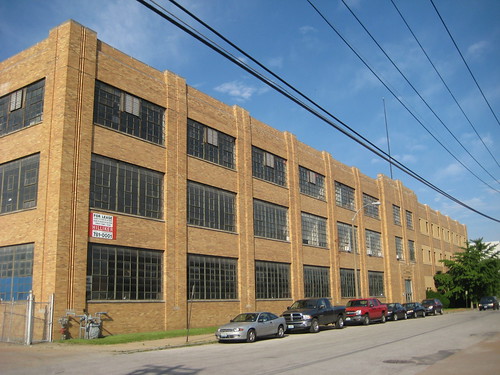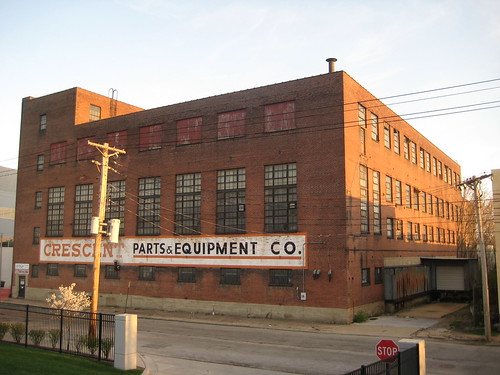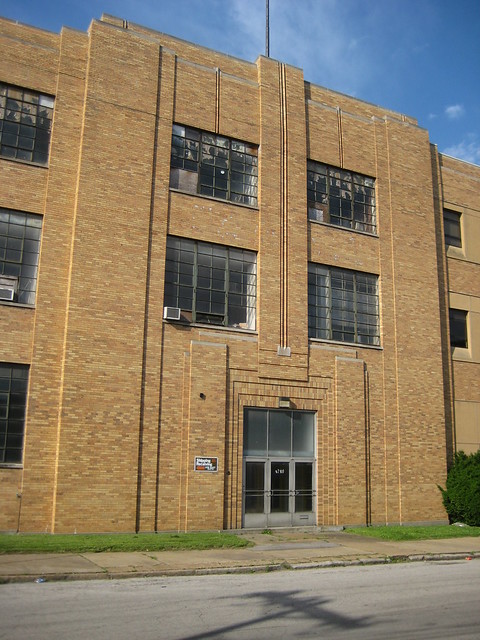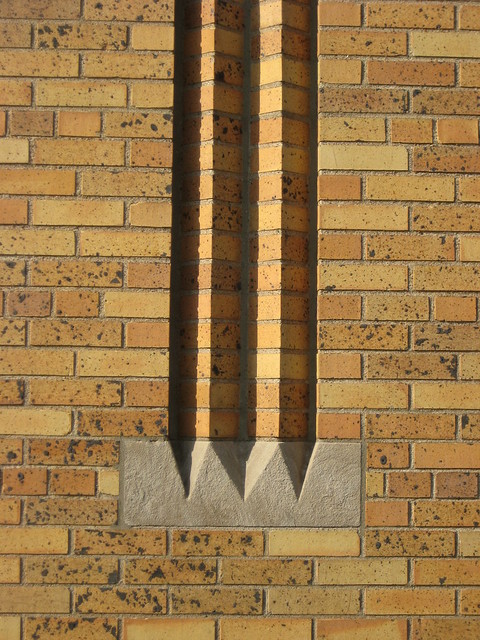
Several weeks ago I heard that someone is in the early stages of putting together a three building historic tax credit project in the CORTEX district. This would be a complete reversal of what has been the mode of operation for the district since it began development in 2005. The master plan for the district which was approved by the Board of Aldermen as part of the areas redevelopment plan had shown demolition of almost all historic buildings for construction of new lab buildings, boitech incubators and office buildings.
This month however, what I had heard is proving to have strong potential to come to fruition. On this months Preservation Board Agenda three CORTEX district buildings are up for consideration as new nominations to the National Register of Historic Places. They include the Post Dispatch Rotogravure Printing Plant at 4340 Duncan (photo above), the West Electric-Southwestern Bell Telephone Distribution House at 4250 Duncan (top photo) and the J.I. Case Threshing Machine Company Branch House at 4260 Forest Park (Google streetview below).
For the past 6 years, since construction of the tilt-up concrete and glass CORTEX building at the southwest corner of Forest Park and Boyle, the Cortex has had mixed success in luring biotech companies to the district. In early 2007, Solae began construction of a their new headquarters building at Duncan and Boyle which required demolition of the O. Morse Shoe Company which had significant Art Deco detailing.
The O. Morse Shoe Company building which had most recently housed SKH Paper Company was demolished for the new Solae headquarters.
Since then however there has been little development activity in the district except for acquisition of land and buildings for future redevelopment. Off and on has been talk of luring other potential companies to the area, but nothing else has moved forward. Although the economy is in a slow recovery from the Great Recession, lending for expensive private commercial development is still difficult to obtain. It seems the leaders of CORTEX have realized that the economics of historic rehabilitation make a lot of sense, especially in the current state of the economy.
The entrance to 4250 Duncan, which is a concrete framed building that has large open floor plates and is well suited for adaptive re-use for offices or biotech lab space. The reuse of historic structures for biotech incubator space has precedent right around the corner at Sarah and Forest Park, where the Center for Emerging Technologies is housed in two rehabilitated structures. Some of the tenants in the CORTEX building started their companies in CET's incubator buildings. Hopefully the nomination of these three significant historic structures to the National Register and the accompanying historic tax credit incentives that come with this designation we will see the renovation of the buildings for new uses fitting with the districts goals.
A simple yet beautiful detail of 4250 Duncan.




